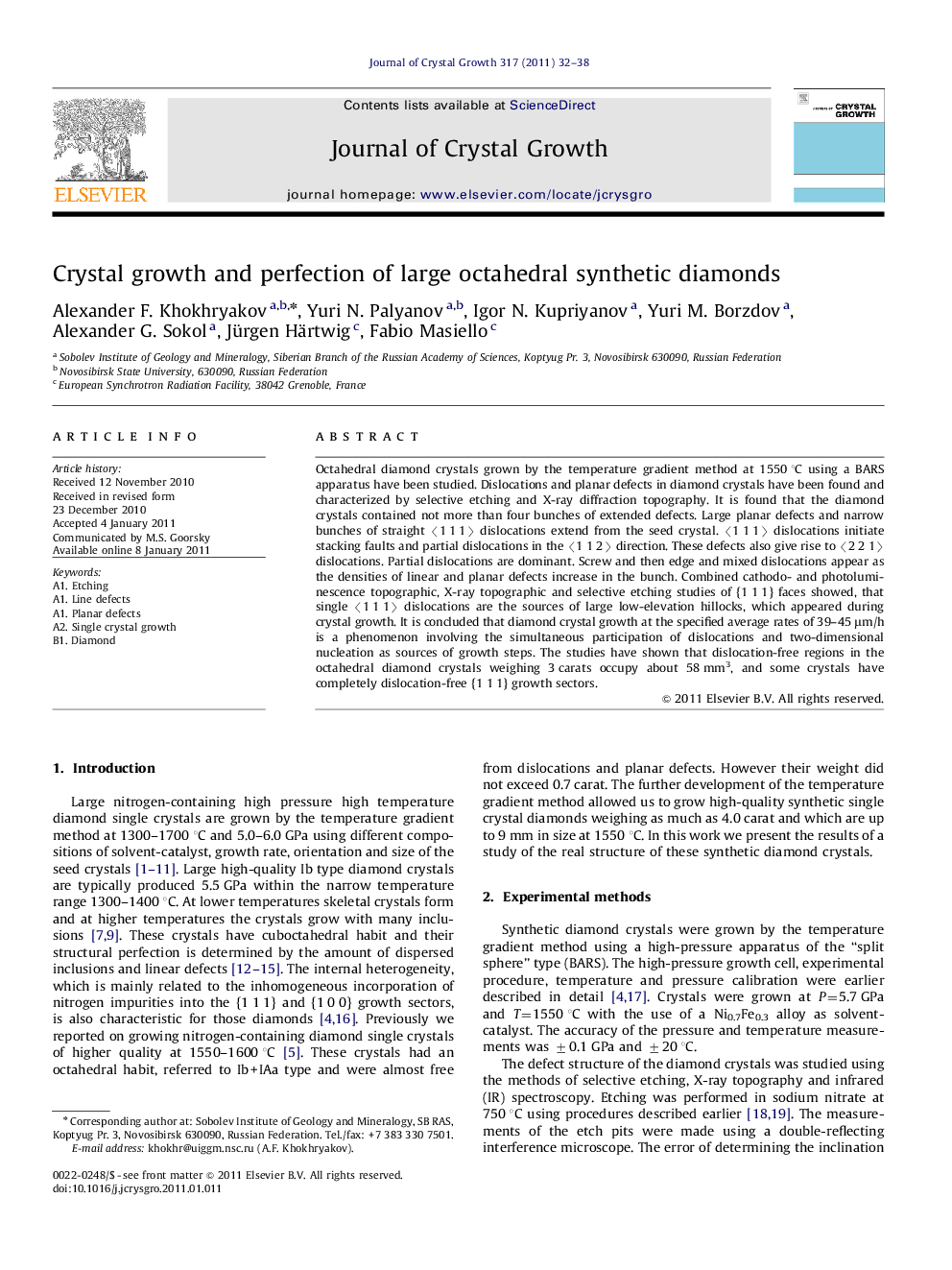| Article ID | Journal | Published Year | Pages | File Type |
|---|---|---|---|---|
| 1792710 | Journal of Crystal Growth | 2011 | 7 Pages |
Octahedral diamond crystals grown by the temperature gradient method at 1550 °C using a BARS apparatus have been studied. Dislocations and planar defects in diamond crystals have been found and characterized by selective etching and X-ray diffraction topography. It is found that the diamond crystals contained not more than four bunches of extended defects. Large planar defects and narrow bunches of straight 〈1 1 1〉 dislocations extend from the seed crystal. 〈1 1 1〉 dislocations initiate stacking faults and partial dislocations in the 〈1 1 2〉 direction. These defects also give rise to 〈2 2 1〉 dislocations. Partial dislocations are dominant. Screw and then edge and mixed dislocations appear as the densities of linear and planar defects increase in the bunch. Combined cathodo- and photoluminescence topographic, X-ray topographic and selective etching studies of {1 1 1} faces showed, that single 〈1 1 1〉 dislocations are the sources of large low-elevation hillocks, which appeared during crystal growth. It is concluded that diamond crystal growth at the specified average rates of 39–45 μm/h is a phenomenon involving the simultaneous participation of dislocations and two-dimensional nucleation as sources of growth steps. The studies have shown that dislocation-free regions in the octahedral diamond crystals weighing 3 carats occupy about 58 mm3, and some crystals have completely dislocation-free {1 1 1} growth sectors.
